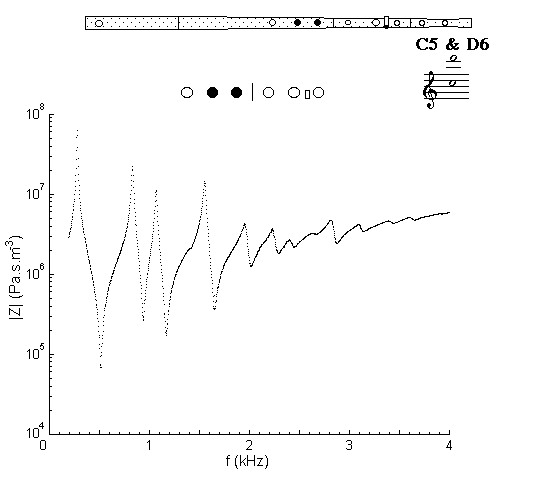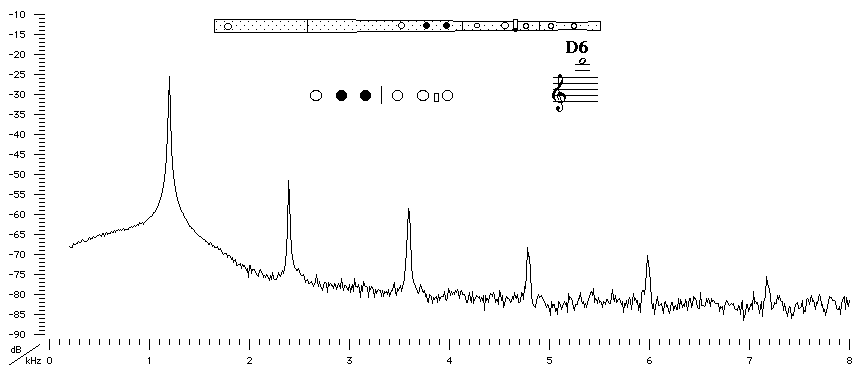| Acoustics of baroque, classical and modern flutes |
classical flute
|
D6 |

|
Acoustic and Fingering Schematic Non-specialist introduction
to acoustic impedance |
This fingering is comparable to that for G4 except for the open register hole. This creates a pressure node (or flow antinode) about two thirds of the way along the pipe, and thus allows D6 but not G4 or G5. Comparing this with the G4 impedance spectrum, we see that the third minimum is little changed. The second is shallower and unplayable. The first minimum plays C5. Both C5 & D6 may be played simultaneously as a multiphonic.

Sound spectrum
of a classical flute with a flared foot played using fingering for D6.
![]()
![]()
![]()
![]()
![]() You can hear D6
played by Geoffrey Collins.
You can hear D6
played by Geoffrey Collins.
| Acoustic measurements are available for these flutes - modern B, modern C, classical C, classical D, classical flared, baroque Sound clips are available for modern B, classical flared and baroque |
To compare flutes, it is easiest to open a separate browser window for each instrument. |